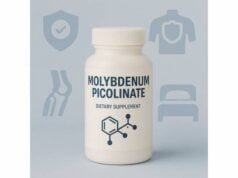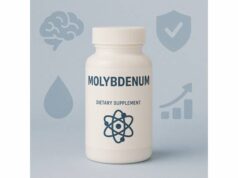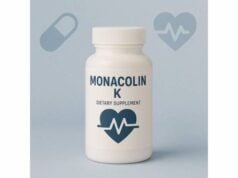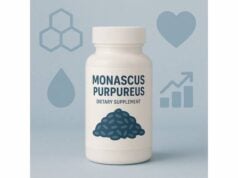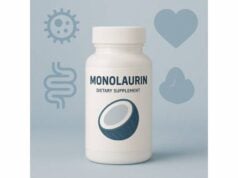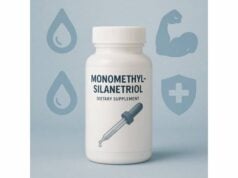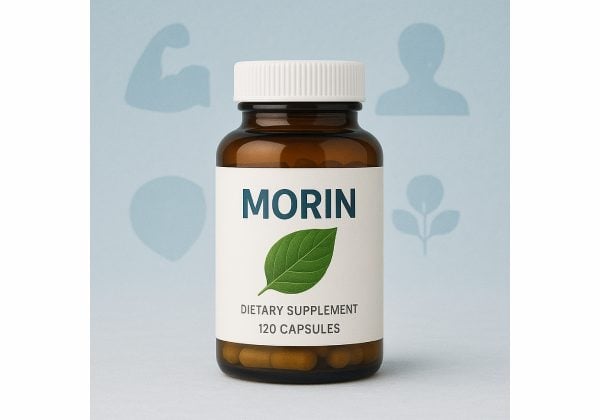
Morin is a plant-derived flavonol best known to chemists as 3,5,7,2′,4′-pentahydroxyflavone and to wellness shoppers as “morin hydrate.” You will find it in supplements positioned for antioxidant support, healthy inflammatory balance, neuroprotection research, and—less commonly—uric-acid control. In laboratory and animal models, morin scavenges reactive oxygen species, modulates signaling pathways linked to inflammation, and shows promise in neurodegeneration models. Yet, unlike more established botanicals, human clinical trials are sparse. That means expectations, dosing, and safety must be handled with care. This guide puts evidence first and marketing second: what morin is, how it appears to work, where benefits are most plausible, the forms you will actually see on labels, sensible dosage ranges drawn from supplement practice (not medical standards), what can blunt or boost its effects, and who should avoid it. If you are curious about morin but want a sober, practical overview before you buy, you are in the right place.
Essential Insights
- Antioxidant and inflammation-modulating effects are strongest in preclinical models.
- Limited human data; treat benefits as exploratory rather than proven.
- No established therapeutic dose; supplement labels commonly provide 250–1,000 mg/day of morin hydrate in divided doses.
- Potential interactions via drug transporters and metabolism; avoid if pregnant or breastfeeding, and speak with a clinician if you take prescription medicines.
Table of Contents
- What is morin and how it works
- Does morin really work
- How to use morin: forms and dosage
- What affects absorption and effect
- Mistakes to avoid with morin
- Safety, side effects, who should avoid
- What the evidence actually shows
What is morin and how it works
Morin is a polyphenolic flavonol found in several plants—especially members of the mulberry family (Moraceae). In supplements, it is usually offered as morin hydrate, the crystalline water-bound form used to improve handling and stability. On a molecular level, morin’s five hydroxyl groups make it an efficient electron or hydrogen donor, enabling it to neutralize reactive oxygen species (ROS) and chelate certain metal ions that catalyze oxidation. Those chemical traits underpin many of the biological effects reported in cells and animal models.
Beyond direct antioxidant activity, morin influences cell signaling. In preclinical systems, it has been shown to modulate pathways such as NF-κB (a master switch for inflammatory gene expression), Nrf2 (a coordinator of antioxidant defenses), MAPK cascades, and mTOR. These upstream effects explain why investigators observe broad, condition-agnostic outcomes—less oxidative damage, lower inflammatory mediators, and preserved cellular function under stress.
You will also see morin discussed in the context of brain health and metabolic resilience. In neurobiology models, morin can limit microglial activation, attenuate dopaminergic neuron damage triggered by toxins, and influence protein homeostasis processes (autophagy and mitophagy). In metabolic and vascular contexts, it has reduced markers of glycation and endothelial stress in animals. A separate area of interest is purine metabolism: morin has both xanthine oxidase inhibitory activity (limiting uric acid production) and a uricosuric effect (encouraging renal uric acid excretion) in rodent models, making it a mechanistically interesting candidate for hyperuricemia research.
However, morin has a practical challenge: poor oral bioavailability. It is poorly water-soluble, subject to intestinal efflux pumps, and rapidly metabolized by conjugation enzymes. This matters because even a potent compound on the bench may not reach effective concentrations in human tissues when swallowed. Much of the modern morin research therefore explores formulation science—micelles, nanoemulsions, and nanoparticles designed to improve absorption, protect morin from degradation, and deliver it to target tissues.
In short, morin is a promising, versatile bioactive with meaningful chemistry and intriguing mechanisms. But it is best approached as a research-grade nutraceutical: promising in the lab, early for people.
Does morin really work
The honest answer depends on what you mean by “work.” If you ask whether morin reliably improves specific health outcomes in humans, the evidence is not yet there; high-quality clinical trials are scarce. If you ask whether morin shows biologically plausible benefits in relevant models, the answer is yes—again and again, across settings where oxidative and inflammatory stress drive damage.
Neuroprotection and brain aging. In toxin-induced models of Parkinson’s disease, dietary morin preserved motor function and dopaminergic neurons while tempering neuroinflammation. In complementary cell studies, morin stabilized mitochondrial function and promoted cellular housekeeping responses. Translating these effects to humans will require controlled trials that track symptoms and biomarkers over time. But the direction of effect—less inflammation, preserved neurons—has been reproduced across labs, lending mechanistic credibility.
Inflammatory balance and oxidative stress. From macrophages to skeletal myotubes, morin lowers pro-inflammatory cytokines and limits ROS-driven damage. It also boosts endogenous defenses (e.g., catalase and glutathione enzymes) through Nrf2-centered signaling. These effects can explain why morin appears protective in tissue injury models (liver, kidney, muscle) exposed to toxins or glucocorticoids.
Uric acid and purine metabolism. Morin’s two-pronged action—mild xanthine oxidase inhibition plus uricosuric activity—reliably lowers serum uric acid in hyperuricemic rodent models. That duality mirrors how modern gout therapy often combines production blockade (allopurinol, febuxostat) with uricosurics when needed. For now, morin’s role should be considered mechanistic and exploratory, not a substitute for guideline-directed care.
Metabolic and vascular context. In animals, morin has improved insulin signaling in insulin-resistant states, eased endothelial dysfunction, and reduced markers of advanced glycation. These findings are consistent with its upstream antioxidant and anti-inflammatory actions. Again, clinical proof of hard outcomes (e.g., HbA1c change, cardiovascular events) is lacking.
Where expectations should be modest. Claims that morin “treats” chronic illness or produces rapid, dramatic effects are not supported. Benefits—when they appear—are typically supportive (e.g., lower oxidative markers, improved tissue histology) and occur in the context of injury models or induced stress, not in free-living human populations.
Practical takeaway: morin looks like a cellular stress buffer—a compound that nudges defenses in the right direction and takes pressure off vulnerable systems. That is meaningful biology, but until robust human data arrive, it should be treated as adjunctive support rather than a primary therapy.
How to use morin: forms and dosage
Forms you will see.
- Morin hydrate capsules or powder. The most common option; labels often list “morin (as morin hydrate).”
- Standardized plant extracts. Less common; sometimes included in multi-polyphenol blends.
- Enhanced-delivery formulas. Micelles, self-nanoemulsifying systems (SNEDDS), and nanoparticle formats aim to improve solubility and uptake. These are typically more expensive and may list smaller doses because delivery is more efficient.
Suggested use in practice. There is no clinically established therapeutic dose for morin. Supplement labels commonly recommend 250–1,000 mg per day of morin hydrate, split once or twice daily with food. If you choose to try it, a conservative pattern is:
- Start low: 250–500 mg/day for one to two weeks.
- Titrate: If well tolerated and you have a clear goal (e.g., wellness metrics, comfort during training blocks), consider 500–1,000 mg/day in divided doses.
- Cycle and reassess: Use for 8–12 weeks, then pause 2–4 weeks to evaluate effect and tolerance.
Timing. Taking morin with a meal can reduce stomach upset and may help absorption. If using an enhanced-delivery product, follow the label’s specific timing; some recommend taking on an empty stomach for faster dispersion.
Stacking with other nutrients. People often pair morin with vitamin C, vitamin E, quercetin, or resveratrol to broaden antioxidant coverage. Combinations can be rational—different polyphenols act on complementary nodes—but stacking raises the chance of drug–nutrient interactions and digestive side effects. Keep stacks simple and time-limited.
Formulation matters. Because native morin is poorly soluble and subject to efflux transporters in the gut, upgraded formulations can meaningfully change exposure. SNEDDS, mixed micelles, and mesoporous or protein-based nanoparticles have improved apparent bioavailability several-fold in animals, allowing lower nominal doses to deliver similar or stronger tissue levels. If you opt for one of these, expect smaller milligram numbers on the label; that does not necessarily mean a weaker product.
Who should design a personalized dose. If you take prescription medications, have kidney stones or gout history, manage a chronic condition, or plan to use morin long-term, involve a clinician (ideally one familiar with drug–nutrient interactions). They can help set goals, choose a form, and decide when to stop.
Bottom line: use morin cautiously and purposefully. Pick a reputable brand, start low, take with food, and give it enough time to judge whether it fits your routine.
What affects absorption and effect
1) Chemistry and solubility
Morin is lipophilic and only sparingly soluble in water, which limits passive diffusion across the intestinal wall. In the lumen, it can also bind proteins and fibers or form complexes with minerals—further reducing free, absorbable morin. These realities explain why intact morin concentrations in blood are typically low after oral dosing in animals.
2) Transporters and metabolism
The intestinal barrier is not passive. Efflux pumps such as P-glycoprotein (P-gp) can shuttle morin back into the gut, and enzymes like UGTs and SULTs conjugate morin for rapid clearance. Even if you raise the oral dose, these “gatekeepers” can block proportionate gains in systemic exposure.
3) Formulation technology
- Micelles and nanoemulsions (e.g., SNEDDS). By solubilizing morin in tiny droplets, these systems present more surface area to the gut lining and can transiently modulate permeability or efflux. In animals, micellar delivery has boosted oral bioavailability dramatically compared with raw morin.
- Nanoparticles (lipid, polymer, protein, mesoporous silica). These protect morin from degradation and ferry it to absorptive sites. Protein-based carriers (e.g., bovine serum albumin) can also enhance photostability and improve compatibility in food matrices, hinting at functional-food applications.
- Phospholipid complexes. Complexation can increase solubility and membrane affinity, a strategy used for other polyphenols.
4) The meal you take it with
A moderate-fat meal often helps disperse poorly soluble compounds. Very high-fiber or very high-calcium meals might bind polyphenols and reduce free levels. Spacing morin from mineral megadoses is a simple, low-risk tactic.
5) The rest of your stack
Some botanicals and drugs inhibit or induce P-gp or CYP3A enzymes. Because morin itself may interact with these systems in experimental models, combinations can be unpredictable. If you take narrow-therapeutic-index medications (antiarrhythmics, transplant drugs, certain chemotherapies), do not add morin without professional guidance.
6) Genetics and the microbiome
Enzyme polymorphisms and gut bacteria shape polyphenol metabolism. Two people taking the same dose can see different metabolite patterns and divergent responses. That variability is normal for polyphenols and argues for cautious, individualized trials rather than one-size-fits-all dosing.
7) Health status
States of high oxidative stress—infection, intense training, acute toxin exposures—can change how much benefit you perceive. Conversely, in stable, healthy adults, effects may be subtle and best assessed with consistent routines and specific outcomes (sleep quality, training recovery notes, lab markers ordered by your clinician).
The lever you control most is the formulation you buy and how you take it. Optimize those first before chasing higher and higher doses.
Mistakes to avoid with morin
Expecting drug-like results. Morin is not a substitute for medicines. It is a supportive bioactive with promising mechanisms, not a clinically proven treatment. Set goals accordingly: subtle improvements in comfort, training recovery, or laboratory markers under professional supervision—not cure claims.
Buying the fanciest formula without a plan. Upgraded delivery systems can help, but they are not magic. If you jump straight to an expensive nanoformula without tracking any outcome, you will not know whether you are paying for performance or packaging. Start with a clear use case and a baseline (symptom diary, relevant labs), then test one variable at a time.
Ignoring interactions. Because morin and its delivery excipients can influence transporters and metabolizing enzymes, stacking with multiple polyphenols or certain drugs raises the chance of unpredictable kinetics. If you take anticoagulants/antiplatelets, cytotoxic or targeted cancer therapies, immunosuppressants, or antiarrhythmics, seek medical advice before adding morin.
Using high doses for long stretches. Without human dosing standards, “more” is not “better.” Long, high-dose use raises the odds of digestive upset, headaches, or interactions. Use time-limited trials with breaks.
Confusing label math. Some products list total capsule weight, not active morin. Others use enhanced delivery with lower milligrams that perform better than a high-milligram raw powder. Read labels carefully: identify the active amount, the form, and the daily serving.
Skipping food. Taking polyphenols on an empty stomach can increase queasiness. A simple fix is to take morin with a meal.
No exit criteria. Before you begin, decide what would count as “working” (e.g., improved training soreness ratings, a target change in a clinician-ordered biomarker) and set a stop date if you do not see value.
Avoiding these missteps keeps your trial safe, interpretable, and cost-effective.
Safety, side effects, who should avoid
What we know (and do not). Most morin safety data come from cell and animal studies, not large human trials. Short-term use in rodent experiments is generally well tolerated at doses far exceeding human supplement intakes. That is reassuring but not definitive for long-term human use.
Common experiences. People who test morin sometimes report mild digestive upset, nausea, headache, or fatigue when starting or when dose is increased too quickly. Taking with food, splitting the dose, or pausing for a week often resolves these issues.
Potential interactions. In experimental systems, morin can influence drug-metabolizing enzymes and transporters (notably P-gp). Interactions are most concerning with drugs that require precise levels to be safe and effective. If you take:
- Anticoagulants or antiplatelets (bleeding risk is theoretical for many polyphenols; caution is still prudent).
- Immunosuppressants, certain chemotherapies, targeted cancer agents, or antiarrhythmics (narrow therapeutic index).
- Strong CYP3A or P-gp substrates prescribed by your clinician.
Discuss morin with your healthcare team first, and do not self-experiment.
Medical conditions. Avoid morin if you are pregnant, trying to conceive, or breastfeeding (insufficient safety data). Use extra caution if you have significant liver or kidney disease or a history of recurrent kidney stones; discuss any antioxidant regimen with your specialist. If you manage gout or hyperuricemia, do not replace prescribed therapy with morin; any adjunct use should be clinician-directed.
Allergy and sensitivities. Morin is a small molecule; reactions are uncommon but possible, especially when combined with delivery excipients (e.g., certain surfactants in micellar formulas) or with plant extracts that contain other constituents. If you have a history of polyphenol sensitivity or multiple chemical sensitivity, start at a minimal dose and monitor closely.
Stop and seek care if you develop rash, hives, chest pain, shortness of breath, unusual bruising/bleeding, dark urine, yellowing of the skin/eyes, or any new severe symptom.
Pragmatically, morin looks low-risk for short-term trials in otherwise healthy adults who are not pregnant and who are not taking interacting medications. But because definitive human safety data are limited, a cautious, consultative approach is warranted.
What the evidence actually shows
This section distills the research landscape so you can weigh claims against data quality.
Study types. The morin literature is dominated by in vitro and animal studies. These define mechanisms (antioxidant, anti-inflammatory, autophagy/mitophagy support; modulation of NF-κB and Nrf2 pathways), show proof of principle in induced disease models (neurotoxicity, tissue injury, hyperuricemia), and quantify bioavailability barriers. There are few human clinical trials assessing clinical endpoints.
Neuroprotection. Multiple teams report that dietary morin protects dopaminergic neurons and preserves motor function in toxin-induced models of Parkinson’s disease. These benefits align with reduced neuroinflammation and healthier mitochondrial signaling—consistent mechanisms for a polyphenol acting on cellular stress networks.
Uric acid metabolism. Morin exhibits a dual mechanism in hyperuricemic rodents: it reduces production via xanthine oxidase inhibition and increases excretion via uricosuric action. That is compelling biology but still an early-stage lead rather than a human therapy.
Formulation advances. Native morin’s poor solubility and transporter-mediated efflux limit exposure. Recent studies demonstrate that micelles, self-nanoemulsifying systems (SNEDDS), polymer or lipid nanoparticles, and mesoporous silica or protein carriers can increase apparent bioavailability several-fold in animals and stabilize morin against oxidation. These delivery strategies are the most active area of morin research today and explain why supplement shelves increasingly feature “enhanced absorption” morin.
Safety signals. Across preclinical models, morin is typically protective rather than harmful at studied doses. That said, transporter/enzyme modulation and the use of potent excipients in some delivery systems raise interaction considerations in people, especially alongside complex medication regimens.
Gaps that remain.
- Dose-finding in humans: We lack standardized dosing, exposure–response data, and long-term safety monitoring in diverse populations.
- Clinical endpoints: Hard outcomes (mobility scores, uric acid targets, organ function measures) have not been robustly tested in randomized human trials.
- Comparative effectiveness: How morin stacks up against more established polyphenols—or whether it adds unique value on top of them—remains unclear.
Reading the tea leaves: morin is mechanistically rich and formulation-sensitive. If you decide to experiment, treat it as a hypothesis test in your own routine, not a guaranteed solution.
References
- Morin hydrate: A comprehensive review on novel natural dietary bioactive compound with versatile biological and pharmacological potential 2021
- Anti-Inflammatory and Neuroprotective Effects of Morin in an MPTP-Induced Parkinson’s Disease Model 2022
- Self-Nanoemulsifying Drug Delivery System of Morin: A New Approach for Combating Acute Alcohol Intoxication 2024
- Morin Hydrate Encapsulation and Release from Mesoporous Silica Nanoparticles for Melanoma Therapy 2023
- The dual actions of morin (3,5,7,2′,4′-pentahydroxyflavone) as a hypouricemic agent: uricosuric effect and xanthine oxidase inhibitory activity 2006
Disclaimer
This article provides educational information about morin and does not offer medical advice. Morin is not approved to diagnose, treat, cure, or prevent any disease. Do not change or stop any medication, or start any supplement, without guidance from a qualified healthcare professional who knows your medical history, prescriptions, and lab results.
If you found this guide helpful, consider sharing it with a friend or colleague on Facebook, X (formerly Twitter), or your preferred platform, and follow us for future evidence-based updates. Your support helps us continue creating careful, reader-first content.

